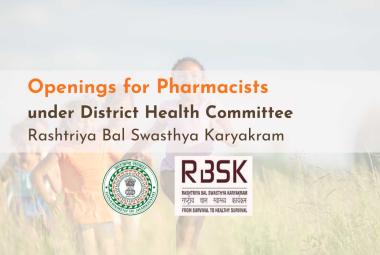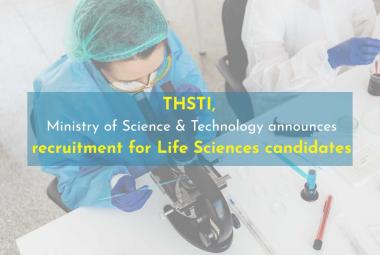{ DOWNLOAD AS PDF }
ABOUT AUTHORS:
Pankaj Kushwah1*, Kayande N.2
Department of Pharmacognosy,
Nimar Institute of Pharmacy, Dhar, MP
pankajnipd@gmail.com
ABSTRACT
The aim of present study was to evaluate antihelmintic potential of crude extract of root of Butea monospermous using Pheretima posthuma as test worm. Butea monosperma is distributed all over India and has been used by triable as well a local people widely. Popularly known as 'dhak' or 'palas', commonly known as ‘Flame of forest’. It has been found to have antimicrobial, wound healing, antifungal, antidiarrhoeal, hypoglycemic, hepatoprotective, antioxidant, anti-convulsive, antistress, anti diabetic, anti-inflammatory activity. It also used in treatment of goiter, spermatorrhoea and antidote for snake bite. In the present work the aqueous and alcoholic extracts of flowers of Butea monosperma were evaluated for its antihelmintic activity against adult earthworms (Pheretima posthuma).
INTRODUCTION
The use of herbal medicine has become increasingly popular worldwide and medicinal plants are believed to be an important source of new chemical substances with potential therapeutic effects.1
Anthelmintic or antihelminthics are the drugs or the agents that destroy or cause the expulsion of such parasitic intestinal worms and helps to treat Helminthiasis, one of the most common infections in humans and cattle. Helminthiasis is a macroparasitic disease of humans and animals in which a part of the body is infected with parasitic worms such as pinworm, roundworm, or tapeworm. This infection is highly prevalent particularly in third world countries due to poor management practices. Helminthiasis can have immunodilatory effects on the host, with implications for any co infecting pathogens. A number of medicinal plants have been used to treat parasitic infections in man and animals. Albendazole is the first drug of choice for the treatment of worm infections.2The World Health Organization estimates that a staggering two billon people harbor parasitic worm infections1. Helminthiasis is still one among the most important human and animal diseases. During the past few decades, despite numerous advances made in understanding the mode of transmission and treatment of these parasites, there are still no efficient products to control certain helminthes and several the indiscriminate use of some drugs are generated several cases of resistance. As an important component of complementary and alternative medicine, traditional Ayurvedic medicinal plants may be useful to discovery and development of new chemical substance for helminthes control which are generally considered to be very important sources of bioactive substances.3 Butea monosperma (Var. Lutea) belonging to family Fabaceae (sub family Papilionaceae) is a medium size tree. It is generally called as Palash, Dhaka, Khaki in mixed or dry deciduous forests in western and central part of India. Its leaves are large & 3- foliate, flowers are scarlet red with orange tinge. Pods are flat and one seeded. The species of Butea monosperma are found in India include Butea monosperma var. lutea Taub, B. Parviflora, B. minor, & B. subperba. It is also known as flame of fores.4It is reputed in systems of medicines as the various parts of the plant Butea monosperma has been used traditionally for many of the diseases like anti-inflammatory, antimicrobial, anthelmintic, antidiabetic, diuretic, analgesic, antitumor, anticancer, astringent etc.5
MATERIALS AND METHODS
Plant material
The whole plant of Butea monosperma collected in the month of January, 2014 from Nimar Institute of Pharmacy Dhamnod Madhya Pradesh(India). The plant specimen was identified and authenticated by Dr.Pusha Mahajan of the Department of Medichem, PG College Khargone.
Preparation of extract
Fresh roots of Butea monospermacollectedand air dried in shade at room temperature. Dried root parts of the plant were ground to coarse powder individually. For ethanolic extract, the dried powdered plant material was extracted with 90% ethanol in soxhlet apparatus and for aqueous extract preparation, the plant material was extracted with distilled water by cold maceration method. All the extracts were further dried at low temperature under reduced pressure and used for the present study.
Worms collection and authentification
Indian earthworm Pheretima posthuma (Annelida) were obtained from water logged area of soil and identified at department of SVBP college of Mandleshwar M.P.India.
Evaluation of Anthelmintic activity
Ethanolic and aqueous extracts from the Butea monospermaroot were investigated for their Anthelmintic activity against Pheretima posthuma. Various concentrations of each extract were tested
in the bioassay, which involved determination of t ime of paralysis and time of death of the worms. Albendazole was included as standard reference and normal saline as control. Sample for the Anthelmintic activity were prepared by dissolving the dried extract in 1% gum acacia in normal saline.
Five groups of approximately equal size earthworm consisting of six worm in each group were released in 50ml of desired formulation (normal saline).Each was then treated with one of the following. Vehicle (1% gum acacia in normal saline), Albendazole (25, 50,100mg/ml) and ethanolic and aqueous extract of Butea monosperma at different concentration (25, 50,100 mg/ml).Observations were made for the time taken to paralysis and death of individual worms. Time for paralysis was noted when no movement of any sort could be observed except, when the worms were shaken vigorously. Death was concluded when the worms lost their motility followed with fading away of their body colors
RESULT AND DISCUSSION
From the results shown in the Table No1.ethanolic extract of root of Butea monospermaexhibited anthelmintic activity giving shortest time of paralysis and deaths related to Albendazole especially with 100 mg/ml concentration. Ethanolic and aqueous extract of root of Butea monosperma caused paralysis of 15.91and 19.35min and time of death of 28.42and 30.71min respectively against Pheretima posthuma. The reference drug Albendazole showed the related at 13.37and 22.66min respectively. The predominant effect of Albendazole on worm is to cause a flaccid paralysis those results in expulsion of the worm by peristalsis. The values are showed in Table 1
Table 1:- Anthelmintic Activity of Ethanolic and Aqueous Extracts of Root of Butea monosperma
|
Drug/treatment |
Conc. |
Time taken for paralysis (min.) |
Time taken for death ( min.) |
|
Albendazole |
25 mg/ml |
20.33 +0.50 |
33.49 + 0.42 |
|
50 mg/ml |
14.66 + 0.58 |
30.74 + 0.50 |
|
|
100mg/ml |
13.37 + 0.36 |
22.66 + 0.68 |
|
|
Ethanol extract |
25 mg/ml |
22.86 + 0.57 |
36.72 + 0.66 |
|
50 mg/ml |
21.40 + 0.31 |
32.06 + 0.35 |
|
|
100mg/ml |
15.91 + 0.76 |
28.42 + 0.56 |
|
|
Aqueous extract |
25 mg/ml |
27.57 + 0.34 |
44.35 + 0.57 |
|
50 mg/ml |
25.22 + 0.45 |
36.60 + 0.57 |
|
|
100mg/ml |
24.22 + 0.55 |
30.72 + 0.47 |
CONCLUSION
It was concluded that aqueous & ethanol extract of root of Buteamonospermapossess potent anthelmintic activity by exhibiting effectiveness for the parameters studied.Further, it would be interesting to isolate the possible phytoconstituents which may be responsible for the activity and the mechanism of action.
REFERENCE ID: PHARMATUTOR-ART-2175
|
PharmaTutor (ISSN: 2347 - 7881) Volume 2, Issue 6 Received On: 02/04/2014; Accepted On: 07/04/2014; Published On: 01/06/2014 How to cite this article: P Kushwah, N Kayande; Evaluation of Antihelmintic Activity of Root of Butea Monosperma; PharmaTutor; 2014; 2(6); 171-173 |
REFERENCES
1. Md. Muksadur Rahman, Md. Shahid Sarwar, Abhijit Das, Md. Mizanur Rahman Moghal, Md. Hasanuzzaman. Evaluation of Cytotoxic and Anthelmintic Activity of Plant Roots of Clerodendrum Viscosum (Family: Verbenaceae). Journal of Pharmacognosy and Phytochemistry 2013; 2 (4): 119-122.
2. Rajendra M. Kawade*, Nitin B. Ghiware, Prashant A. Daware, Shrinivas K. Sarje, Mahavir H. Ghante, Sudhir M. Vadvalkar. Evaluation of In-vitro Anthelmintic activity of Nerium indicum Mill root extracts. Indo American Journal of Pharmaceutical Research, 2013 ISSN NO: 2231-6876.
3. Debnath P, Dey P, Bhakta T*. Evaluation of anthelmintic activity of pineapple fruit extracts using indian earthworm (pheritima posthuma). Mintage journal of Pharmaceutical & Medical Sciences?26-27.
4. Amita Sant, Ashwini Ingole, Disha Dhabarde, Manish Kamble. Evaluation of anthelmintic activity of flower extract of Butea monosperma var. lutea. Journal of Pharmacognosy and Phytochemistry 2014; 2 (6): 152-153.
5. Borkar V. S.*, Gangurde H. H., Gulecha V. S., Bhoyar P.K., Mundada A.S. Evaluation of in vitroantihelmintic activityof leaves of Butea monosperma. International Journal of Phytomedicine 2 (2010) 31-35.
6. Ashish Pagariya*, Sarika Chatur, & Faimddum Nawab. In vitro anthelmintic activity of root extract of murraya koenigii (linn) spreng.IJPI Volume 3, Issue 1, Jan. ? Feb. 2013.
7. Ajay Sharma*, Sumit Gupta, Sandeep Sachan, Ashutosh Mishra, Anshu Banarji. Anthelmintic activity of the leaf of Saraca indicaLinn. Asian Journal of Pharmacy and Life Science. Vol. 1 (4), Oct-Dec, 2011.
NOW YOU CAN ALSO PUBLISH YOUR ARTICLE ONLINE.
SUBMIT YOUR ARTICLE/PROJECT AT articles@pharmatutor.org
Subscribe to Pharmatutor Alerts by Email
FIND OUT MORE ARTICLES AT OUR DATABASE









